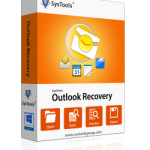Remembering eWorld, Apple’s Forgotten Online Service
Before the Internet’s meteoric rise, large centralized dial-up services such as America Online, Prodigy, and Compu- Serve dominated the online landscape. In this competitive climate 20 years ago (www.ew.com/ew/article/0,,303473,00.html) Apple introduced eWorld, a subscription-based information service for Mac and Newton users. Although Apple shuttered eWorld in 1996, the service is still notable for its unique city-based interface and as a symbol of Apple’s overreaching ambition in that era.
Users accessed eWorld through Apple’s custom client software and connected by way of a dial-up modem. Once you connected, the eWorld software displayed a playfully illustrated aerial view of a small city. Each building in it represented a different focus, containing articles, chat rooms, discussion boards, and downloads. For example, clicking the Business and Finance Plaza building presented the user with articles from Inc. magazine, businessthemed discussion boards, and stock quotes. Other buildings focused on games and entertainment, shopping, learning, and Apple product support. At launch, the service cost $8.95 a month, including two free hours of access. Additional access cost $7.95 an hour from 6 a.m. to 6 p.m., $4.95 at other times. While those prices seem high today, they were in line with those of competitors.
TROUBLE IN EWORLD
From its start in June 1994, eWorld suffered from a lack of marketing and promotion. And because it took so long for Apple to make changes to its manufacturing processes, nearly a whole year elapsed before the company bundled the eWorld software with all new Macs (http://chris2x.com/2005/02/12/the-eworld-that-was-and-wasnt/).
On top of those problems, the consumer-targeted Internet hit in a big way in 1994. On the service’s first birthday, Apple announced that eWorld had attracted 90,000 members. At the time, AOL measured its subscribers in the millions. Apple planned a Windows client, but that project never materialized. In 1995, Apple introduced an Internet On-Ramp that gave eWorld users access to Internet newsgroups, FTP sites, mailing lists, and the Web. Throughout 1995, eWorld membership numbers rose slowly. Behind the scenes, Apple began planning the transition to an ISP model. And then the bottom fell out, putting Apple’s projects into limbo.
THE END OF THE LINE
During the last few months of 1995, it became apparent that Apple would post staggering losses (around $700 million) at the end of the quarter. Services tangential to its primary profit center—hardware—had to go. Sadly, that included eWorld. When Apple announced in March 1996 that eWorld would close, many subscribers reacted with huge disappointment.
While its numbers were never stunning, the service fostered a healthy and devoted online following. At the end of its 22-month life span, eWorld boasted only 147,500 subscribers—a paltry number compared to AOL’s 3.5 million. But for those users who forged real, lasting relationships on eWorld, the service was never about numbers. It was about family and community. (Source:Macworld)



























